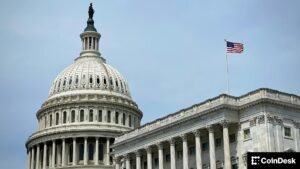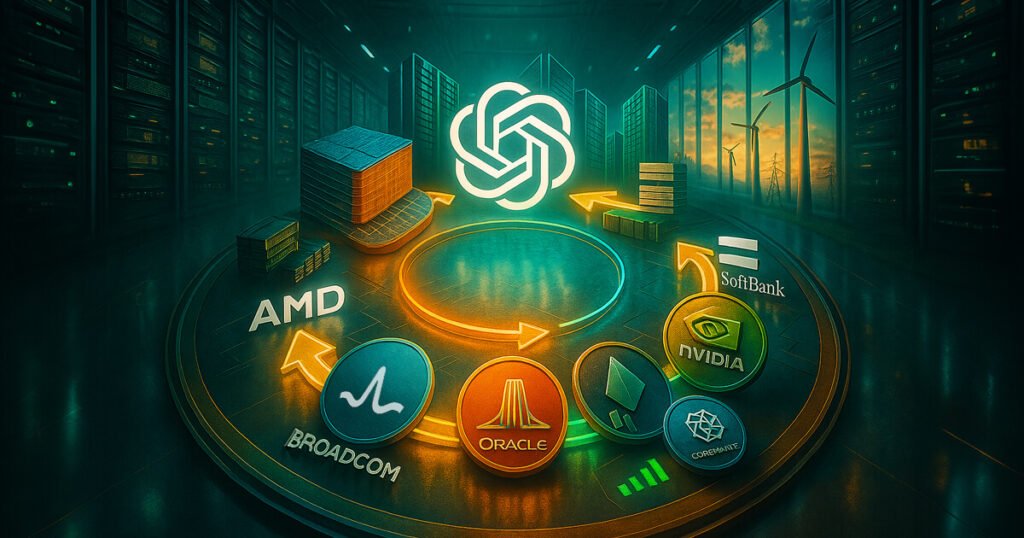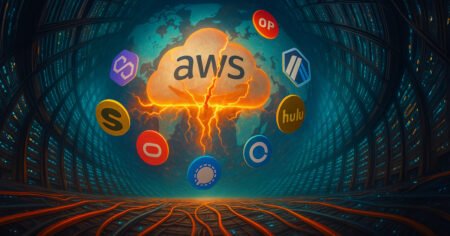OpenAI’s $300 Billion Hardware Expansion: The Future of AI Infrastructure
OpenAI has embarked on a monumental $300 billion hardware expansion that solidifies its relationships with chip suppliers, financiers, and energy providers. This ambitious plan includes multi-year agreements with AMD and Broadcom, setting the stage for tens of millions of AI accelerators to be delivered from 2026 to 2029. These deals, which promise approximately 16 gigawatts of new computing power, could outpace the electricity consumption of several small countries. AMD will be responsible for supplying 6 gigawatts of Instinct GPUs, while Broadcom aims to co-design and deploy 10 gigawatts of custom silicon and rack systems, marking a significant leap in neural network processing capacity.
The collaboration with AMD includes performance-based equity warrants for OpenAI, tying the company’s expansion closely to AMD’s market performance while ensuring increased GPU deliveries. Broadcom’s engagement extends beyond standard supply arrangements to co-develop technology that will support OpenAI’s extensive requirements over the next few years. This hardware expansion is further reinforced through the Stargate project involving Oracle and SoftBank, which spans five sites across the U.S. and represents perhaps the largest privately financed tech infrastructure project in history.
The Circular AI Economy
The structure of OpenAI’s agreements illustrates a burgeoning circular economy in AI infrastructure. Capital, equity incentives, and purchase obligations are interconnected across various vendors, creating a self-reinforcing cycle. OpenAI’s arrangement with AMD exemplifies this feedback loop, as it ties GPU deliveries directly to the equity performance of AMD, thus incentivizing both parties to work in alignment. Similarly, other major players, like Nvidia, reported their stake in CoreWeave, culminating in additional agreements with OpenAI worth $6.5 billion, solidifying the financial interdependencies between chip vendors, infrastructure lessors, and AI compute consumers.
These interconnected partnerships add complexity and depth to financing arrangements, where vendors may grease the wheels with their own financial commitments to facilitate chip purchases. This scenario invites critical attention to how these capital structures might amplify overall market demand for AI technologies, consequently impacting revenue flows and adoption rates.
Energy Challenges Ahead
As demand for AI accelerates, the energy requirements to power these vast computational resources are also climbing. Goldman Sachs forecasts a staggering 165% increase in global data center electricity consumption by 2030. As data centers become increasingly pivotal in the AI landscape, operators will need to forge long-term power purchase agreements and enhance on-site energy generation capacities. Reports suggest that by 2030, U.S. data centers could use over 14% of the country’s total electricity, raising substantial planning risks if interconnections have delays and regulatory hurdles exist.
The fluid regulatory environment adds another layer of complexity, identified by recent rulings from the UK Competition and Markets Authority regarding Microsoft’s partnership with OpenAI. While existing clauses seem safe from scrutiny, any intensification in equity-linked supply arrangements might provoke renewed examination of market power considerations, influencing pricing and accessibility.
Leveraging Custom Silicon for Cost Efficiency
OpenAI and Broadcom’s intertwined innovations will play a pivotal role in shaping cost efficiency. Through co-designed custom silicon, the two could achieve significant performance improvements in terms of power and processing capabilities that could redefine the unit economics of AI infrastructure. If successful, these developments can lead to cash flows that are self-sustaining as demand for AI computation grows.
However, risks remain prevalent; the execution hinges on timely advancements in production, packaging, and memory bandwidth improvements. The two companies aim to commence deployment by the second half of 2026, with extensive utilization ramp-up projected through to 2029, marking a critical period for revenue realization.
Tracking Performance and Utilization
To navigate the complexities of OpenAI’s forward path, it’s crucial to align announced expansions with real-world workloads, energy deliverability, and cost structures. Anticipated gigawatts from AMD and Broadcom will require a clear evaluation against the backdrop of workload growth rates and energy contract metrics. As these relationships mature, the financial interplay embedded in the agreements serves a dual purpose; they will provide initial funding while minimizing risk for both OpenAI and its vendors.
As deployment timelines draw near, the performance of CoreWeave’s existing financing will highlight how tightly interlinked supplier equities and infrastructure capabilities are shaping OpenAI’s growth trajectory. Adoption of AI technologies is not merely a function of hardware availability; it requires investor confidence and regulatory certainty that transform potential into actual market gains.
The Road to Sustainable Compute
In the coming years, it becomes imperative to monitor how effective deployments translate into sustainability in data-center utilization metrics and energy coverage ratios. If OpenAI’s announced gigawatts align well with workloads and energy-efficient contracts, these financing circles will facilitate a stable AI computing ecosystem rather than merely a risk-laden marketplace among suppliers and providers.
The real test lies between now and the end of 2029 when comprehensive assessments will indicate whether this monumental hardware expansion achieves its promise. Keeping an eye on how each of the five Stargate sites harmonizes with OpenAI’s ramping demands will provide critical insights into the stability and viability of the burgeoning AI market. Ultimately, those willing to navigate this complex landscape with foresight could reap unprecedented rewards, both financially and technologically.

















